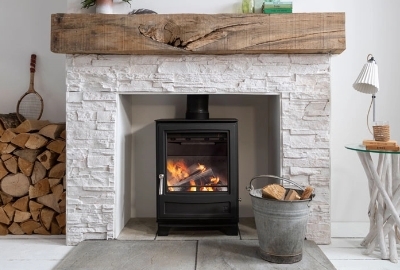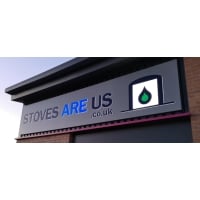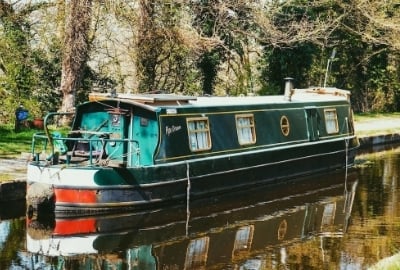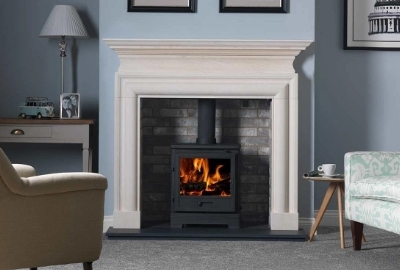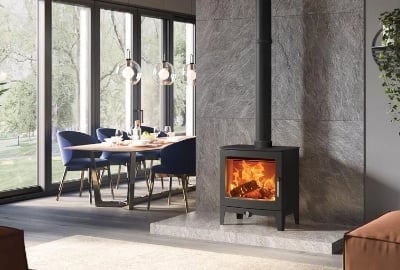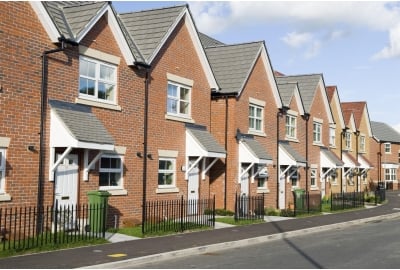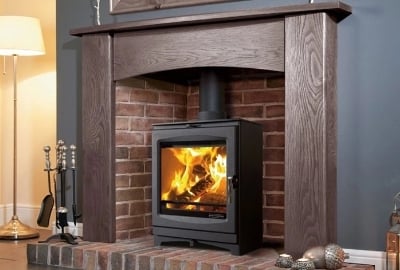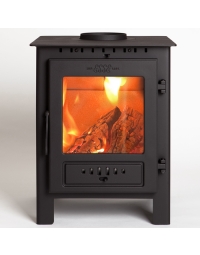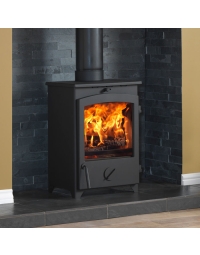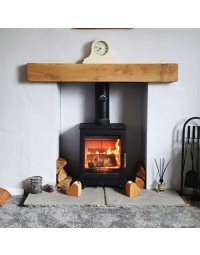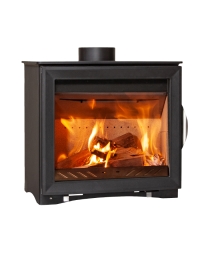If you are lucky enough to own a wood burner or are looking to purchase one, in this guide we’ll try to steer you in the right direction on the topics of the correct operation of your wood burner and which products you might consider buying.
Before we go any further we’ll take a look beyond the recent headlines that suggest wood burners could be banned and that they give off excessive levels of air pollution and particles.
Are Wood Burning Stoves Going to be Banned?

Despite what some media headlines may portray there are no proposals to ban wood-burning stoves! The Ecodesign regulation for solid fuel stoves came into force in the UK on 1st January 2022. This means that all stoves manufactured from this date must comply with the efficiency and emissions levels set out within Ecodesign. Modern eco wood-burning stoves are more efficient and less polluting than ever before and offer a very low-carbon, sustainable and renewable way to heat your home.
Do Wood Burning Stoves Give Off Air Pollution?
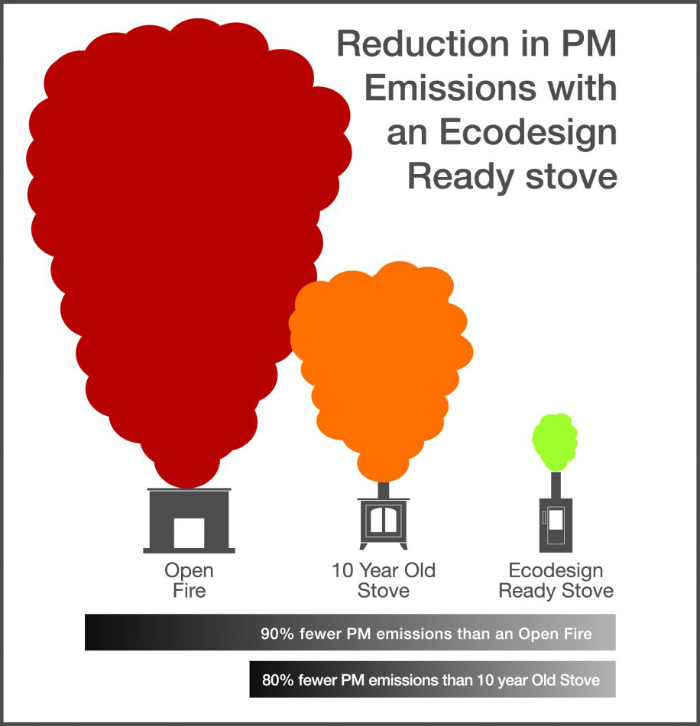
Wood combustion will give off some particles but a modern stove burning the right fuel (e.g. Ready to Burn certified fuel) has very low levels of emissions. Based on independent test results from an accredited laboratory, a modern Ecodesign and/or clearSkies stove will produce up to 90% fewer emissions than an open fire.
Do Wood Burners Cause the Same Levels of Pollution as an HGV?
We’ll forgive you for believing that using a wood burner to heat your home causes the same pollution levels as an HGV in your living room. This is simply not the case, a Euro 6 HGV can produce thirteen times more PM2.5 emissions than an Ecodesign wood-burning stove over a week.
What is a clearSkies Marked Stove?
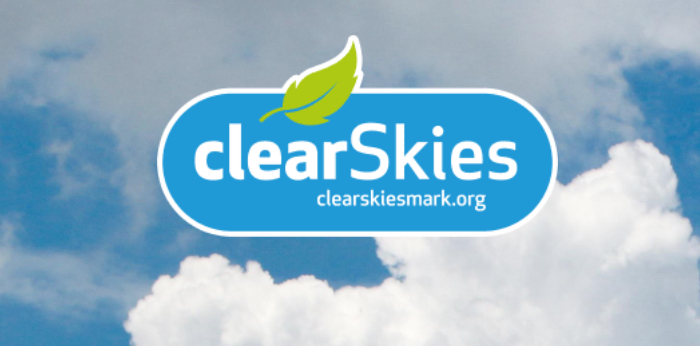
If you notice a clearSkies label on a wood-burning stove it means the appliance you are buying meets all the energy and efficiency criteria set out but the Government. The different levels/ratings allow you to identify how far beyond the Ecodesign criteria they go to reduce emissions and increase efficiency. For more information on this topic visit the clearSkies website here.
How Can I Use My Log Burner More Sustainably?
Using a wood burner sustainably involves several practices to minimise the impact on the environment and to ensure the efficient and safe use of the wood burner. Here are some tips that will improve the efficiency of your log burner, reduce your environmental impact and help you become eco-friendlier when it comes to using your stove.
- Choose a high-efficiency wood burner - High-efficiency wood burners burn wood more cleanly and use less fuel than older, less efficient models. When choosing a wood burner, look for Ecodesign models. They release up to 90% fewer emissions than an open fire, and up to 80% fewer than some older stoves. An Ecodesign stove has an efficiency rating of 75% or higher, meaning that they are far more effective at heating a room than open fires and older stoves and require less fuel. They produce less smoke and release significantly fewer pollutants into the air thanks to their clean-burning technology.
- Choose the correct heat output - When buying a new wood-burning stove for your home you should ensure that you choose the right size for your home. A stove that’s operating at a lower heat output than its nominal level will not be burning the fuel at optimal clean burning temperatures. Ensuring you get the right size for the room where you plan to use it is crucial for sustainable use and for your comfort when sitting in the space. On each product page on our website, you’ll find a handy calculator that can help you obtain the correct amount of heat (kW) your room will require.
- Burn the correct fuel - Not only is freshly cut wood difficult to light, but it’ll also release more pollutants into the air which we are all trying to avoid. Well-seasoned firewood that has been cut and left to dry for one year for softwoods and two years for hardwoods is the best choice for your wood burner. Kiln-dried wood is another option. When purchasing wood for your stove, look for the Woodsure logo, this mark means the fuel is under 20% moisture and approved for use in Smoke Control Zones (when used within a DEFRA-approved stove).
- Check the moisture content - Before you burn logs in your stove, it is always worth using a moisture meter to check the moisture content is under 20%. A moisture metre is an inexpensive and easy way to check the moisture content and can be handy if you are buying or sourcing freshly cut timber to season at home before burning.
- Clean the chimney regularly - A dirty chimney can cause smoke to back up into the room or cause a chimney fire. Having your chimney cleaned at least once a year by a professional chimney sweep can prevent the build-up of creosote and other substances in the chimney. To prevent this and keep your chimney safe, you should have your chimney swept at least once per year. You can find a chimney sweep on the Guild of Master Chimney Sweeps website.
- Operate at the right temperature - Burning wood at a low temperature which is known as slumbering can lead to a higher release of pollutants we want to avoid. Slumbering a stove can also increase the build-up of creosote in your chimney, increasing the risk of a dangerous fire. To avoid these potential problems ensure your wood burner operates at the right temperature which is typically between 180-220 degrees Celsius.
- Support sustainability - To offset the carbon emissions from burning wood when you’re shopping for fuel, ensure it is FSC-certified wood. This means it has been grown and harvested sustainably and by doing this, you can ensure that the wood you’re burning to heat your home is not contributing to habitat loss or deforestation.
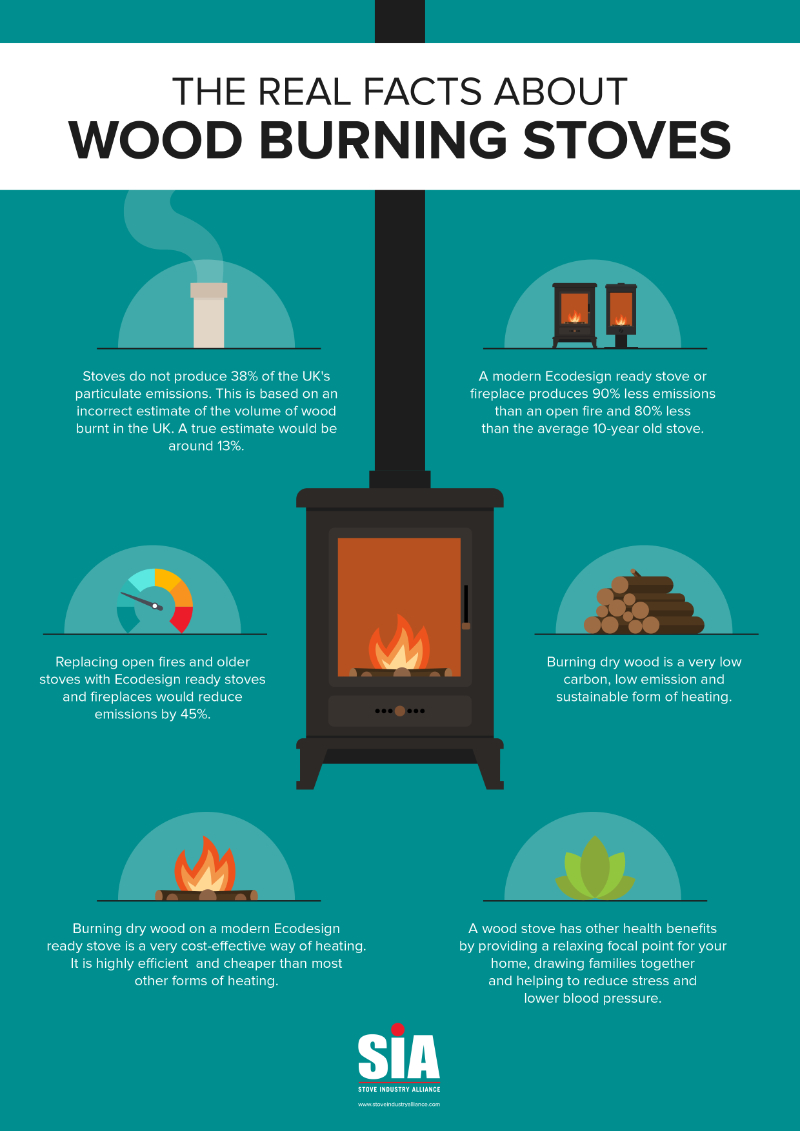
Buying an Ecodesign Stove from StovesAreUs
You can view our full range of Ecodesign stoves here alternatively we’ve put together some of our most popular models below to save you time. All the Ecodesign and DEFRA-approved stoves we stock meet the high-efficiency rating requirements and offer a clean-burning low pollution source of heating.

